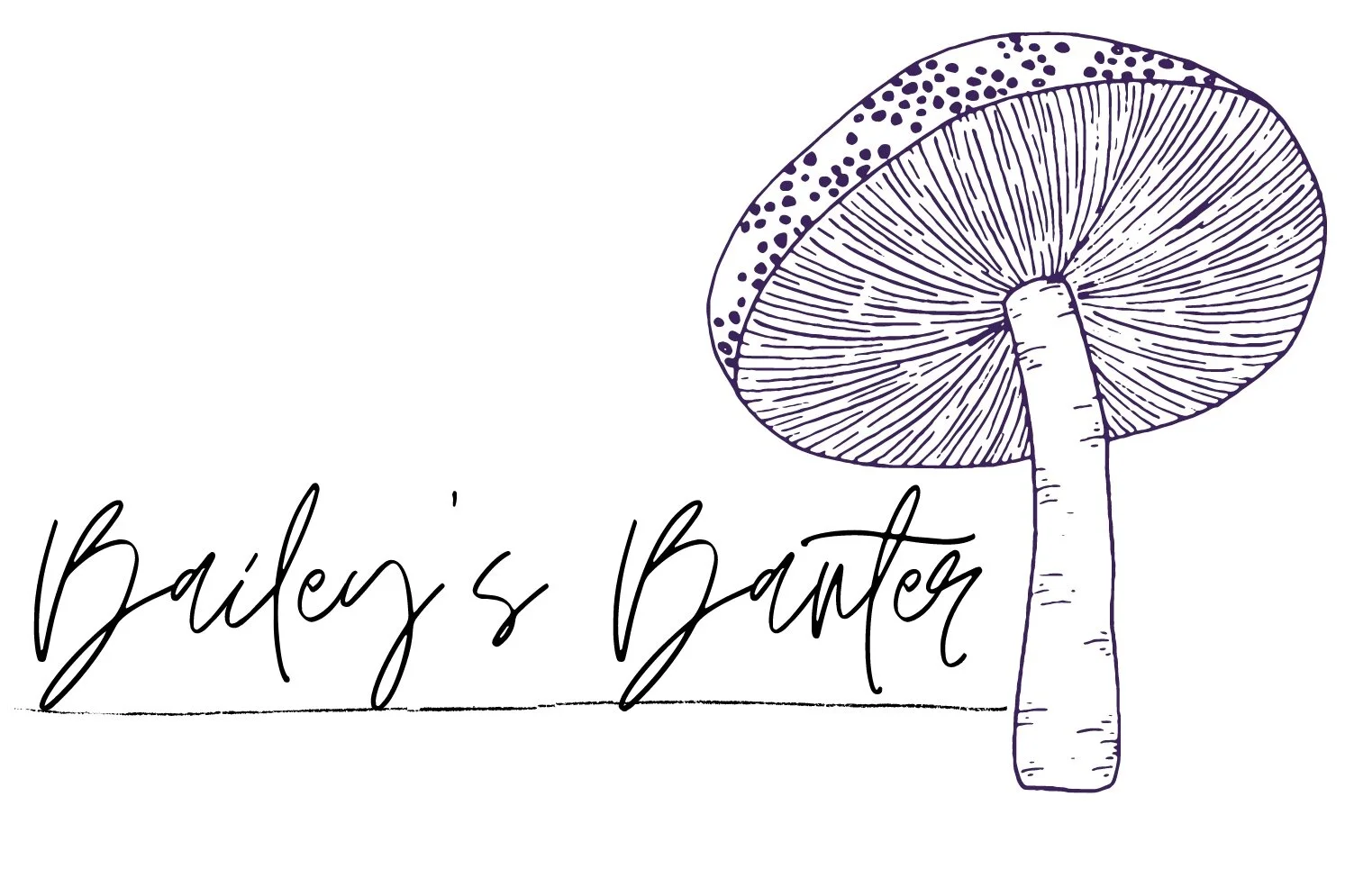MUSHROOM OF THE MONTH: APRIL
These sneaky little buggers are one of the most prized and well known mushrooms of all time, they even have a board game named after them- which I do in fact own, proudly!
If you’re from the Midwest you know them well, its sort of a phenomenon that happens every spring. You see hikers with wicker baskets fighting each other off, throwing bows, and misleading each other to different spots to keep others away from their prized goldmines of these precious mushrooms.
YOU KNOW IT, ITS……. MORELS!
Unfortunately, I have not had the honor of finding my first morel yet, something I REALLY REALLY REALLY Hope to change this season! LI feel like a phony mushroom hunter, but all the resources I’ve found harp on how it takes experience, a keen eye, and mostly practice to be able to identify these adult Easter eggs.
Part of the fun of morels is the hunt anyway. See, it is believed they have a symbiotic relationship with certain species of trees through their mycelium- (more on these fun words in a later post!) but because they work so well together with trees and with the soil, its almost impossible to replicate their growth in a lab or man-made setting. Which again, is part of the neat thing about them- every morel has been hand picked from mother earth herself which makes these mushrooms very expensive.
In these monthly posts we’ll look at the whose, whats, wheres, whys, and whens of a different species of mushroom each month! Why is morel for April? Well, lets start with the when-
(we’re going in a wacky order so just hang on for the ride! If you have slight OCD like me it may bother you, and for that I sincerely apologize, please know I am deeply bothered too… ANYWAY LETS GO!) WHEN:
· SPRING!
· When tree buds start a-bloomin’!
· The old timers say, “when oak leaves are the size of a mouse’s ear- that’s when morels will start popping up.”
· Realistically, soil temps have to be in the 50s consistently- and who out there takes the soil’s temperature regularly?
· Other resources listed if there are consecutive nights in the 50s with slight moisture then you’ll have some good luck in finding morels.
· Soil conditions are largely dependent on moisture levels and temperature/ energy being transferred through the tree and mycelium
WHAT:
· Morel is a type of mushroom in the genus Morchella
· A mushroom is the fruiting body/ reproductive organ of a mycelium network that is constantly growing under the soil.
· Mushrooms are solely responsible for dispersing spores- similar to seeds but mushroom version
· A mushroom develops when mycelium is stressed (beetle attack, fire [really good time to find morels after a forest fire…] chainsaw, etc.) or when spring sap delivers an influx of nutrients and carbohydrates.
· It is thought that when stressed, such as a tree being cut down, the mycelium shoots up a mushroom in order to disperse spores in an attempt to ensure its survival!
WHO:
· “Morchella, the true morels, is a genus of edible sac fungi closely related to anatomically simpler cup fungi in the order Pezizales. These distinctive fungi have a honeycomb appearance due to the network of ridges with pits composing their caps. Morels are prized by gourmet cooks, particularly in French cuisine.” -Wikipedia
· shape varies greatly
· oblong to bulbous looking mushroom that can range from blonde-ish yellow, to grey/brown
· honeycomb like exterior!!!! VERY IMPORTANT because PLOT TWIST- there is a false morel, that is toxic, and you’ll know its false because of its wrinkly cap, not honeycomb shaped!
from google images
from wideopenspaces.com
· Another important detail is that the base of the cap joins the white-ish stem and the hollow of the cap runs continuously with the stem.
WHY:
· they are expensive, exotic looking and delicious
· they have a meaty texture that’s ‘easy on the palate’
· also an earthy and nutty flavor
· also the hand-picking goes into their value
· as well as the fun of going out and finding them! Its something any trained mushroom fanatic can do!
WHERE:
· Pastures, meadows, and orchards- once again the temperature and moisture levels influence the fruiting body greatly
· Grow abundantly the season after a forest fire- don’t want to look in the charred remains, but at the browned outskirts
· Trees to be on the lookout for: pine, spruce, hickory, sycamore, ash, elm, and fruit trees (hence the orchards!)
· Also can look in well drained areas that aren’t too terribly wet- I was always told creek bed was a good place to look!
These elusive, valuable, and straight up yummy mushrooms are seemingly everywhere- according to all of the facebook groups I’m a part of. There’s like a yearly countdown in said groups to morel season, and then everybody excitedly posts their findings from the tiniest in early March to motherlodes in May! Or, they share in the sorrow of a sad season together- its quite cool to be a part of really.
The funniest part is in the comments when people ask, “where did you find these?” the answer is ALWAYS- “no way im giving away my secret.” Its like an unsaid rule that you don’t ask an expert about their locations because its just like mushroom code not to intrude on someone’s jackpot area!
The only sad part is that makes it a bummer if you’re not very trained in naturalistic skills yet like mushroom finding, or tree ID’ing- only means there’s more room for improvement right? J
So there ya have it, the morel, “a mystery, a miracle, a gift of spring woods” according to outdoorlife. Thanks for reading and joining in the fun of the mushroom of the month! You are appreciated and wonderful and I wish you the best of luck this mushroom hunting season!


